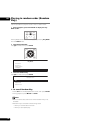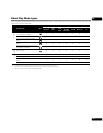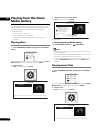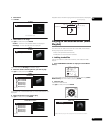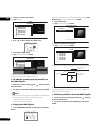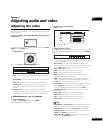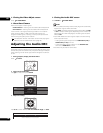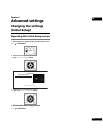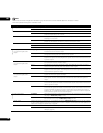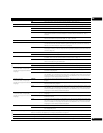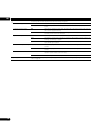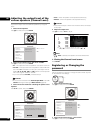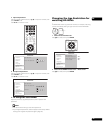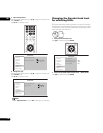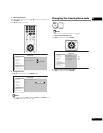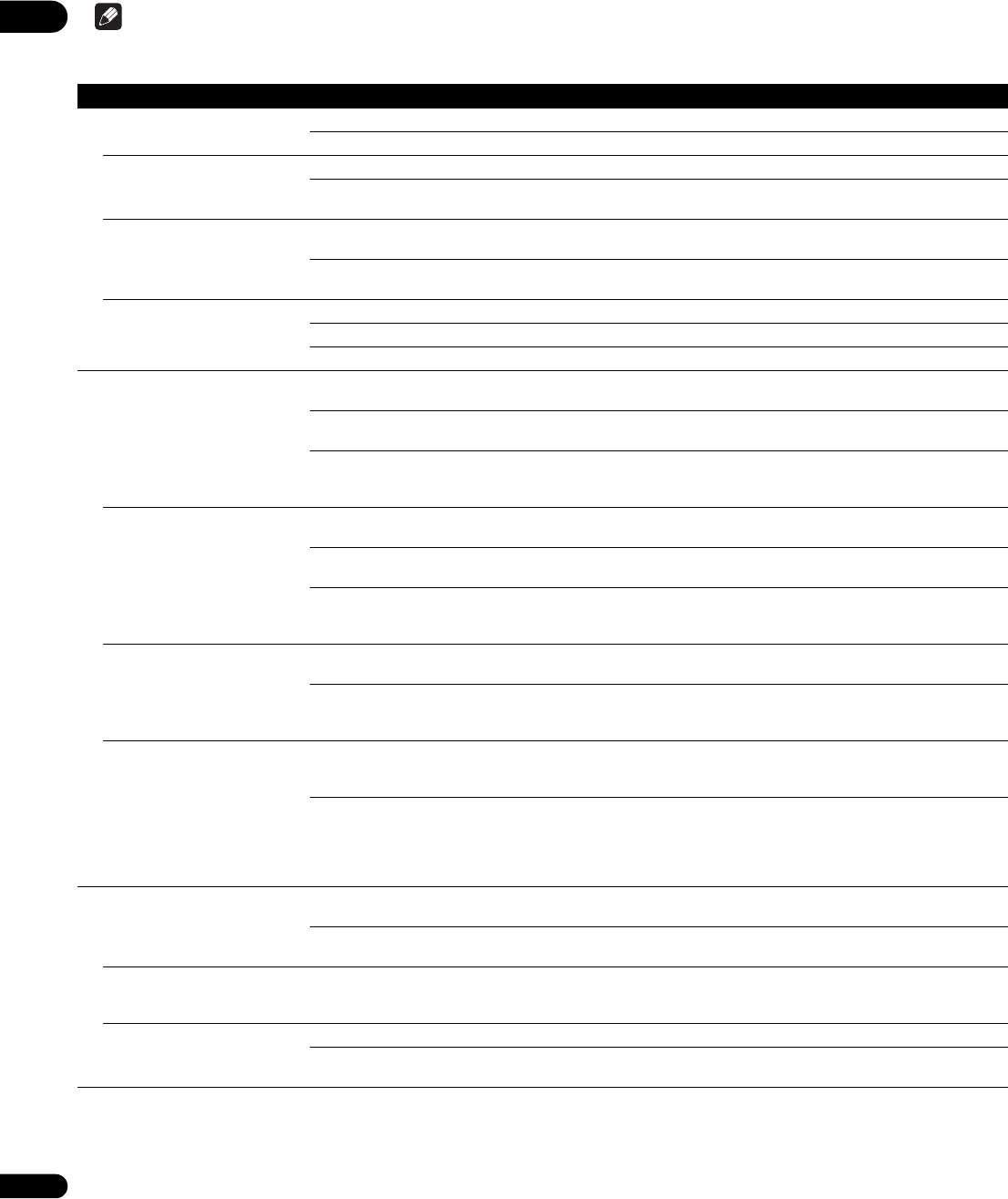
06
40
En
Note
• Items that cannot be changed are indicated in gray. The items that can be selected depend on the player’s status.
• The factory default settings are indicated in bold.
Setting Options Explanation
Video Out
TV Aspect Ratio 16:9 (Widescreen) Select this when connected to a wide (16:9) TV.
4:3 (Standard) Select this when connected to a conventional TV.
4:3 Video Out Full 4:3 pictures are displayed over the entire screen.
Normal 4:3 pictures are displayed with black bands along the sides. Select this when you cannot
switch the aspect ratio to 4:3 on the TV.
DVD 16:9 Video Out Letter Box 16:9 pictures are displayed with black bands at the top and bottom. Select this when
watching on a 4:3 screen.
Pan & Scan The picture is displayed over the entire screen, with the left and right sides of the 16:9
picture cut off. Select this to watch 4:3 pictures over the entire screen.
Still Picture Field This eliminates instability of the picture when playback is paused.
Frame This makes pictures clear when playback is paused, but instability may be observed.
Auto Field and Frame is selected automatically according to the disc being played.
Audio Out
Dolby Digital Out
* Only valid for digital audio
outputs.
Dolby Digital 1 Dolby Digital audio signals are output. With BD-ROM discs, the secondary audio and
interactive audio are mixed for output.
Dolby Digital 2 Dolby Digital audio signals are output. With BD-ROMs, the signals are output without
mixing the secondary audio and interactive audio signals.
Dolby Digital PCM Select this when the connected AV receiver or amplifier, etc., is not compatible with Dolby
Digital audio signals. The Dolby Digital audio signals are converted into linear PCM audio
signals for output.
DTS Out
* Only valid for digital audio
outputs.
DTS 1 DTS Digital Surround audio signals are output. With BD-ROM discs, the secondary audio
and interactive audio are mixed for output.
DTS 2 DTS Digital Surround audio signals are output. With BD-ROMs, the signals are output
without mixing the secondary audio and interactive audio signals.
DTS PCM Select this when the connected AV receiver or amplifier, etc., is not compatible with DTS
Digital Surround audio signals. The DTS Digital Surround audio signals are converted into
linear PCM audio signals for output.
AAC Out
* Only valid for digital audio
outputs.
AAC Select this when the connected AV receiver or amplifier, etc., is compatible with AAC audio
signals. The AAC audio signals are output.
AAC PCM Select this when the connected AV receiver or amplifier, etc., is not compatible with AAC
audio signals. The AAC audio signals are converted into linear PCM audio signals for
output.
DTS Downmix Stereo DTS-HD Master Audio signals, DTS-HD High Resolution Audio signals or DTS Digital
Surround audio signals converted to linear PCM audio signals are converted into 2-channel
(stereo) signals for output.
Lt/Rt DTS-HD Master Audio signals, DTS-HD High Resolution Audio signals or DTS Digital
Surround audio signals converted to linear PCM audio signals are converted into 2-channel
signals compatible with Dolby Surround for output (when the connected AV receiver or
amplifier, etc., is compatible with Dolby Pro Logic, the AV receiver or amplifier outputs the
linear PCM audio signals as surround audio signals).
Speakers
Audio Output Mode 2 Channel Select this when the TV’s analog 2-channel (stereo) audio input terminals are connected to
the player’s AUDIO OUT (2 ch) terminals.
Multi-channel Select this when the multi-channel audio input terminals of an AV receiver or amplifier, etc.,
are connected to the player’s AUDIO OUT (7.1 ch) terminals.
Speaker Setup When an AV receiver or amplifier, etc., is connected to the player’s AUDIO OUT (7.1 ch) terminals, this sets whether
or not to use the speakers which are connected to the AV receiver or amplifier, as well as the size of the speakers. For
details, see Changing the speaker setup on page 43.
Channel Level Fix The output for the various speakers is set to the maximum.
Variable The output level of the various speakers is set within the range of –6.0 dB to +6.0 dB (in 0.5
dB steps) (page 44).



